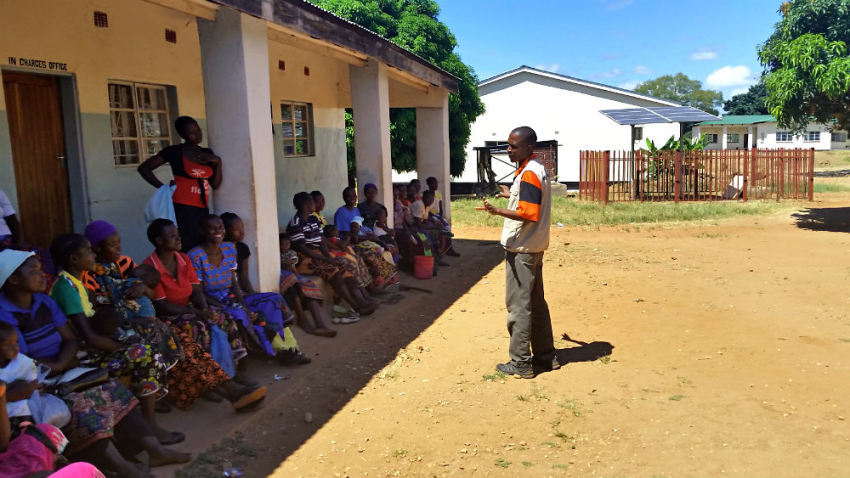Why Didn't You Come Sooner? — A Zambian Mother, Living With HIV, Exposes Her Child to the Virus (CP in Zambia 2)
This CP reporter, along with a second journalist, a blogger, a D.C.-based World Vision media relations manager, and local World Vision Zambia staff, visited various villages and communities in the south African country between March 23 and 27 to get a firsthand look at the nonprofit's work, including how it supports the clinic and expanding health center at the Moyo ADP.

It was on Wednesday, March 25 that the group visited Nurse Himaanga at the health center, which was undergoing extensive construction to become a full-fledged hospital, thanks to funds from World Vision donors. The ADP facilities serve about 14,380 people who face the particular challenges of high maternal and infant deaths. World Vision Zambia reports that "every day, nearly 800 women die from causes related to pregnancy and childbirth and over 17,000 children under the age of 5 die from preventable causes."
In regards to HIV, World Vision reports that one in seven Zambians has the virus and that women make up nearly two-thirds of the number of HIV-positive adults. The humanitarian organization also reports on its website that "nearly 40 percent of babies born to HIV-infected mothers in Zambia are at risk of being infected by the virus."
The baby boy who Nurse Hamaanga briefly examined during the observing group's visit had been tested for HIV in January, but his results could take up to six months to be returned. Normally, testing a blood sample for HIV can take as little as an hour, but in this baby's case it would take longer since his blood sample had been sent to a backlogged hospital in Lusaka, the capital.
"But look at the child… the mother was tested at the time she was pregnant and she was positive at the time. The clinic helped in terms of delivery, to prevent mother-to-child transmission," explained World Vision Zambia Communications Officer Collins Kaumba after the group had left the health center.
He suggested that if the situation had been properly monitored, perhaps the child's condition would have been different.
"If the facilities were here they would tell the family to come back after one week, then (they) could tell them the results (of the test)," Kaumba added. "But at the moment, they are not sure, but the child is already in a serious situation and it's very hard. So even if they have the results later on, the damage is almost done."
World Vision, founded in 1950, provides relief, development and advocacy assistance to poor children, their families and their communities "in nearly 100 countries, serving all people, regardless of religion, race, ethnicity, or gender," according to the nonprofit's website. Learn more about World Vision's work in Zambia: http://www.worldvision.org/our-impact/country-profiles/zambia.
Correction: May 26, 2015:
An article on Wednesday, May 6, 2015, reported that the child featured was three months old. The child was 15 months old.



























